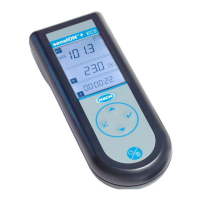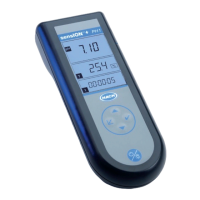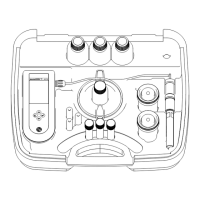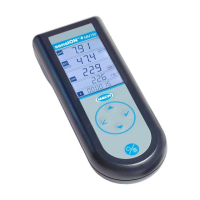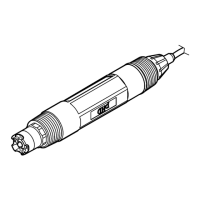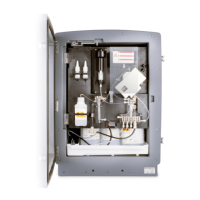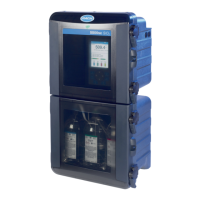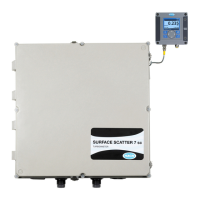28
SECTION 3, continued
3.2.1 Performing a Calibration Using pH 4, 6.86, 7, and 10 Buffers
1. If using a probe without a temperature sensor, see
Section 2.3.1 on page 22 and Section 2.5 on page 22 for
information about obtaining and using a default temperature.
2. Prepare two pH buffers, either 4.01 and 7.00 (or 6.86), or
7.00 (or 6.86) and 10.01, according to the electrode
instruction manual.
Note: Use a 6.86 or 7.0 pH buffer for the mid-range buffer. To view or
change the setting for the mid-range buffer see Section 3.1.5.
Note: The pH values for the buffers are given for 25 °C. If the sample
temperature is not 25 °C, the pH values displayed for the buffers will
reflect the correct pH value for the sample temperature.
3. Press I/O/EXIT to turn the instrument on. From the Reading
mode, press
CAL. CAL and flashing ? will appear in the upper
display area, along with
Standard and 1.
4. Press
READ/ENTER. The temperature and pH values will be
updated until a stable reading is reached.
Note: If the meter is measuring in pH mode, it automatically moves to the
next calibration step when stabilization is reached (indicated by
three beeps). If measuring in mV mode, the three beeps will still
sound when the stabilization occurs, but
ENTER must be pressed to
accept the reading. This lets the operator control the acceptance
point of the buffer.
5. When the reading has stabilized or been accepted, the
standard number will change to
2.
6. Remove the probe from the first buffer and rinse with
deionized water. Place the probe in the second buffer.
7. Repeat steps 5 and 6 for the third buffer and press
EXIT.
8. Press
READ/ENTER. The temperature and pH values will be
updated until a stable reading is reached.
9. When the reading has stabilized or been accepted, the slope
value and the
Store and ? icons will appear. Verify the slope
value is within the ranges specified in the electrode manual.
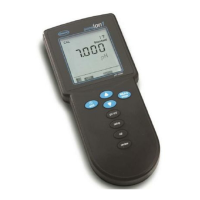
